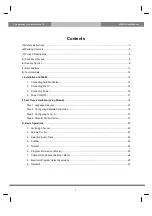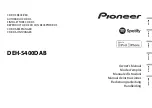
64
Navigation
The text files can be created, e.g., by
using a simple text editor software.
Note
The text editor must support the
UTF-8 character encoding for
Unicode.
Each text file name need to consist of
the category name, a single
underscore, the category's number
and the file extension .poi.
Example file names:
■ Business_2.poi
■ Home & Living_8.poi
■ Culture_15.poi
Note
The length of the text file names is
limited to 32 characters.
POI categories and assigned
numbers:
(1) Private, (2) Business, (3)
Restaurant, (4) Hotel, (5)
Automotive, (6) Travel, (7) Cinema,
(8) Home & Living, (9) Shopping, (10)
Craft, (11) Sport, (12) Sight, (13)
Health care, (14) Leisure, (15)
Culture, (16) Nightlife, (17)
Communication, (18) News &
broking, (19) Government office, (20)
General.
Entering POI data into the text files
The image below shows a sample
text file named Home & Living_8.poi
with some sample POI data:
The POI data need to be entered into
the text files in the following format:
Longitude coordinate, Latitude
coordinate, "Name of POI", "Any
additional information", "Phone
number (optional)"
Example: 7.0350000, 50.6318040,
"Michaels Home", "Bonn - Hellweg 6",
"02379234567", see image above.
The GPS coordinates need to be
expressed in decimal degrees.
The maximum length of the POI name
is 60 characters. The same applies to
the additional information string and
the phone number string.
The POI data of each destination
address need to be entered in a single
separate line, see image above.
Storing the text files on a USB drive
The text files with POI data need to be
stored in a folder named myPOIs that
is located in the root directory of the
USB drive.
Example: F:\myPOIs\Home &
Living_8.poi, where F:\ is the root
directory of the USB drive.
After importing the individual POI
data to the Infotainment system (see
import description further below), the
Imported POIs menu will show a list
of selectable POI categories like the
following:
















































